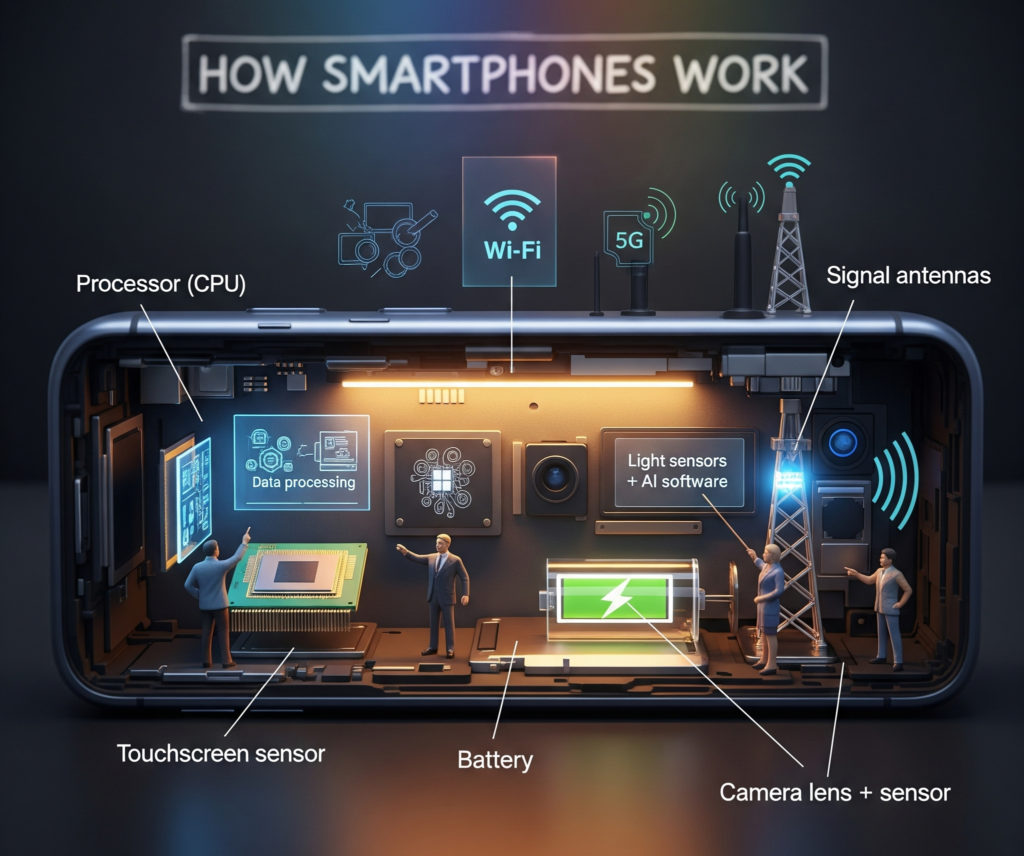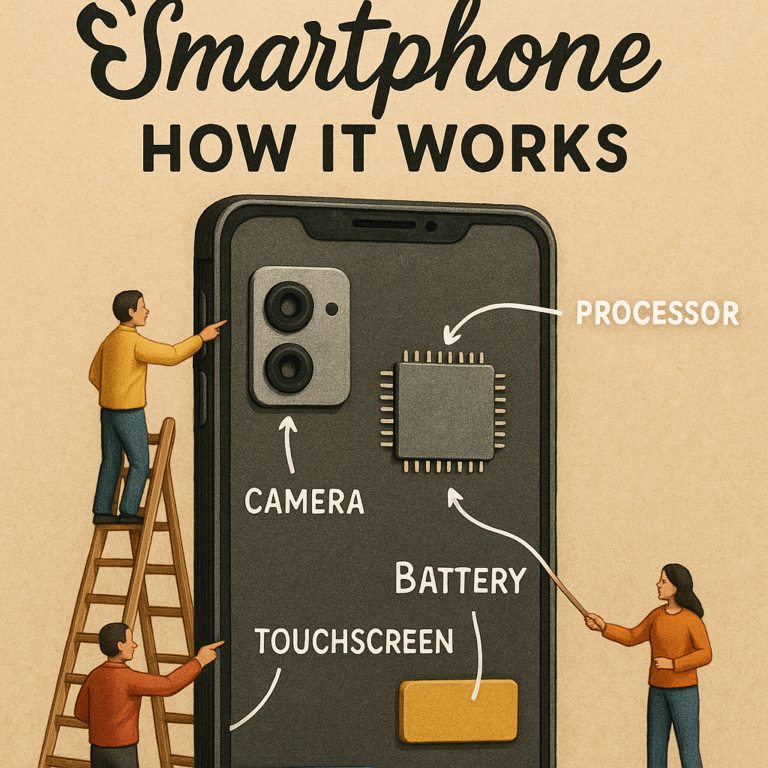📱 The Science Behind Your Smartphone: How It Works and Why Students Should Know
Smartphones have become a huge part of our daily lives. We use them to text, take pictures, watch videos, do homework, play games, and even learn online. But have you ever wondered—how do smartphones actually work?
So, let’s take a closer look at the science and technology inside your smartphone, explained in a fun and simple way!

🧠 1. The Brain of the Phone: The Processor
Every smartphone has a processor, also known as the CPU (Central Processing Unit). This tiny chip is like the brain of the phone. It runs apps, opens websites, and allows you to swipe and type quickly.
Processors are made using microchip technology and can process millions of tasks in just a second!
📶 2. How Smartphones Connect to the Internet
Smartphones use wireless signals to connect with the internet and other devices. Here’s how:
- Wi-Fi connects your phone to the internet through a router.
- Mobile data (3G, 4G, 5G) connects your phone to nearby cell towers.
- Bluetooth allows your phone to connect to headphones, smartwatches, or speakers.
These signals are possible because of tiny antennas hidden inside the phone.
💡 3. The Touchscreen: Science at Your Fingertips
The touchscreen is what makes smartphones easy and fun to use. When you touch the screen, it sends signals using something called capacitive touch technology. This helps the phone know exactly where you touched and how to respond.
That’s why you can swipe, zoom, or tap to play games or open apps instantly!
🔋 4. The Battery: Your Phone’s Power Source
Smartphones are powered by rechargeable lithium-ion batteries. These batteries are lightweight and can store enough energy to keep your phone running for hours.
Many modern phones also have smart charging systems that help save energy and extend battery life.
📸 5. The Camera: More Than Just Taking Pictures
Your smartphone camera uses a mix of optics (lenses), digital sensors, and software to take pictures and videos. Some phones even use AI (Artificial Intelligence) to adjust lighting, focus, and filters automatically.
That’s why smartphone photos look so good, even without a big camera!
🗣️ 6. Voice Assistants and AI
Voice assistants like Siri, Google Assistant, and Alexa use Artificial Intelligence (AI) and speech recognition to understand what you say and give helpful answers.
This is one way that smartphones are becoming “smarter” every day, and it’s a great example of machine learning in action.
🎓 Why Should Students Learn About Smartphone Science?
Smartphones are not just fun gadgets—they are amazing tools built with science, math, and engineering. When students understand how they work, they:
- Become more digitally aware
- Develop interest in STEM subjects
- Learn to think critically and creatively
- Feel inspired to create technology, not just use it
🌐 Final Thoughts: Your Smartphone is a Pocket-Sized Wonder
From the screen you tap to the signals that connect you, every part of your smartphone works together thanks to incredible science. By learning about this technology, students become smarter users—and maybe even future innovators.







